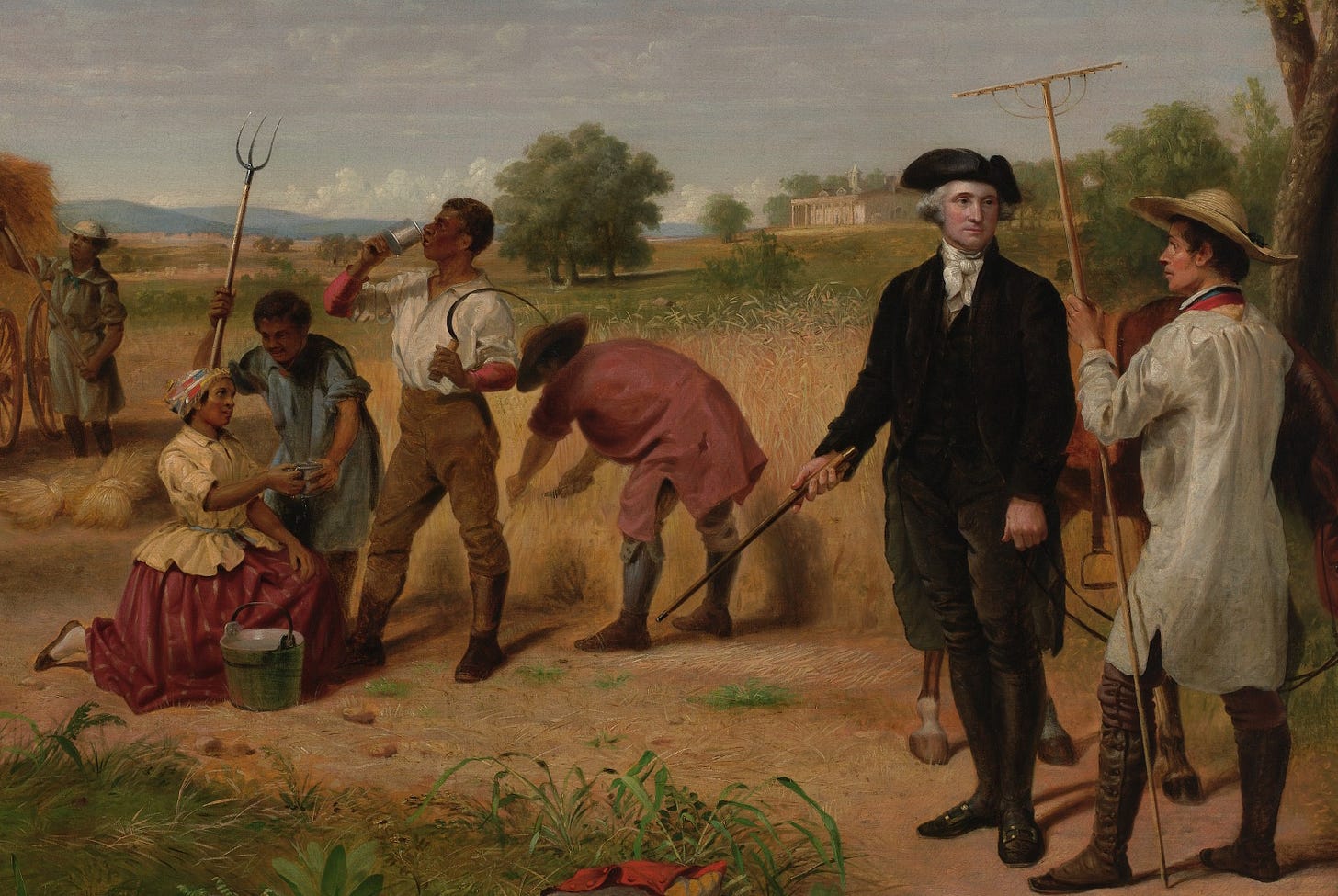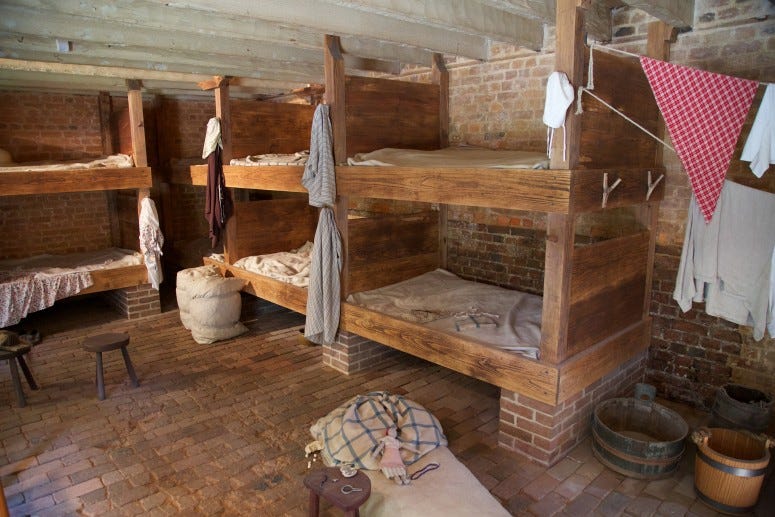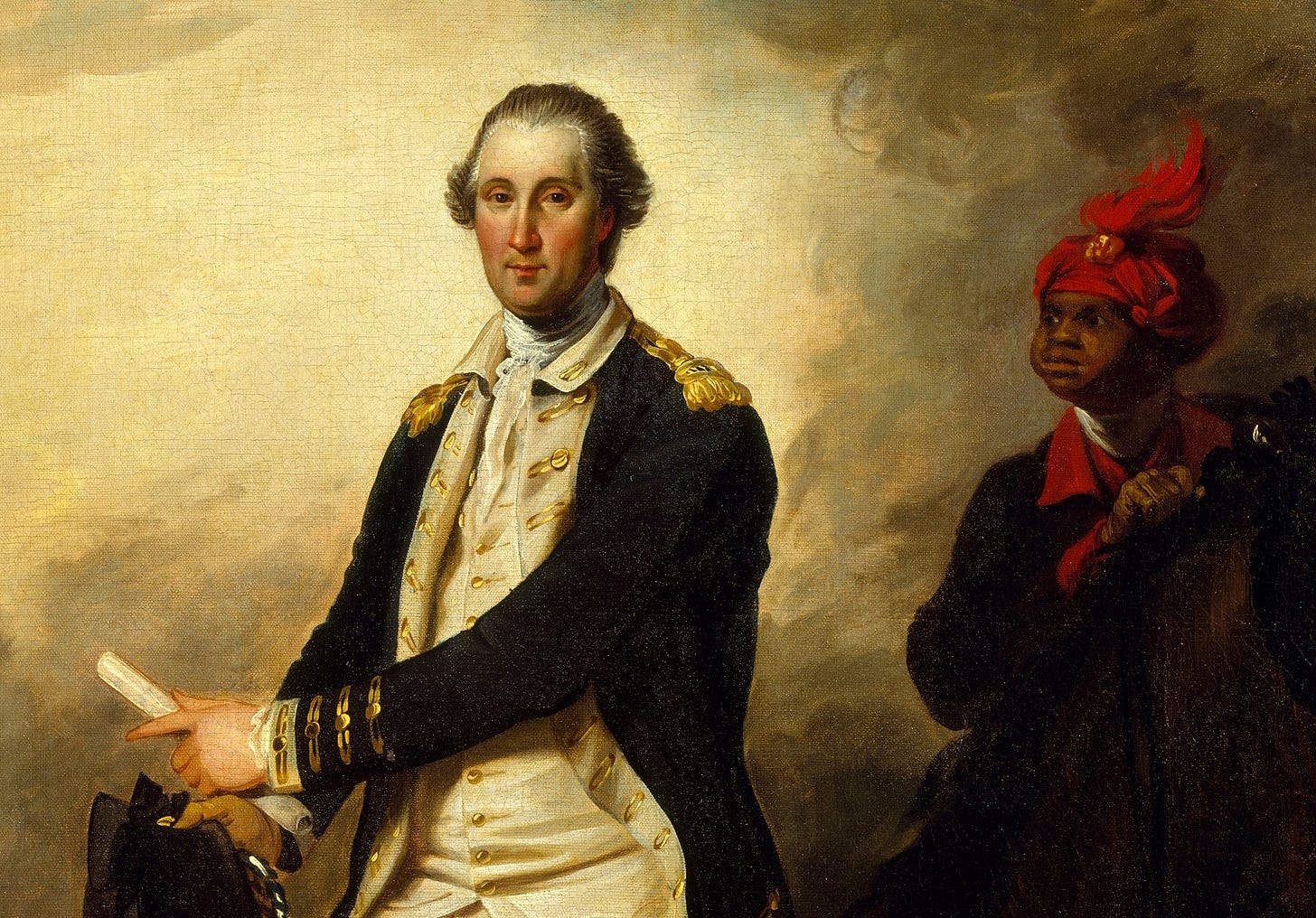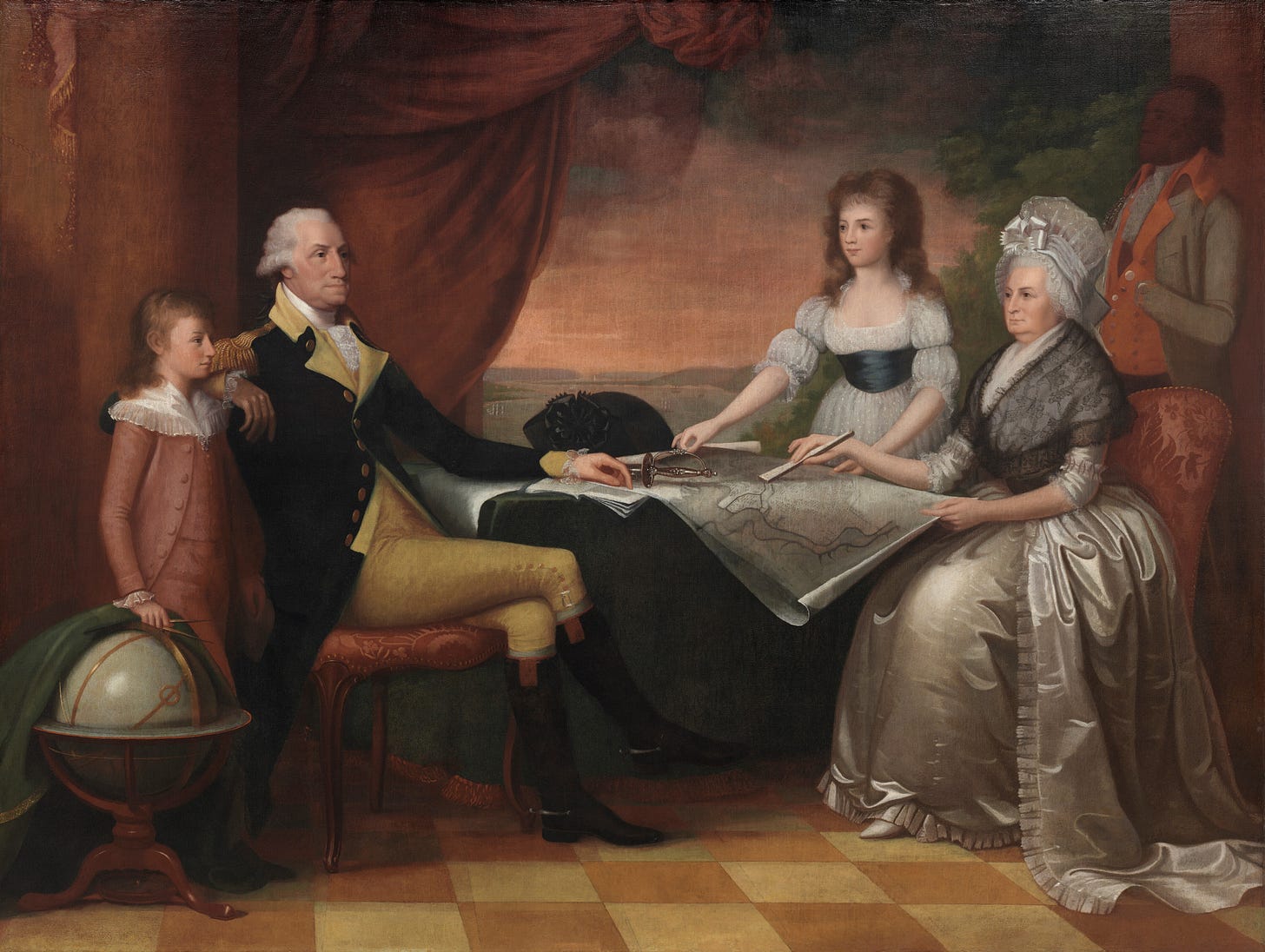
Recently, I embarked on a self-imposed challenge to read a biography of every American President in order. The first step in my journey was Washington: A Life, the epic, Pulitzer Prize-winning narrative of the life of the first President of the United States written by Ron Chernow. Drawing on an astonishing breadth of primary sources, including Washington’s personal diaries and correspondences, Chernow artfully humanizes a figure that has been elevated to mythic status in the three centuries since his birth. I discovered a complicated figure—a man who could remain calm and resolute on the battlefield as bullets flew within inches of his skin yet became nervous and uncomfortable when forced to speak in front of a crowd, a man respected by his peers for his emotional and moral temperance who delighted in the company of beautiful women and even carried on a years-long emotional affair with the wife of his best friend, and a man who, perhaps most inexplicably, championed the rights of man and the principles of personal liberty while holding in bondage hundreds of his fellow human beings. In recognition of Juneteenth, a day celebrating the end of slavery in America, I take a look at George Washington and his long, tangled relationship with that peculiar institution.
Washington grew up in a world dominated by the institution of slavery. The practice had been in use in Virginia since 1619, when around two dozen enslaved Africans, brought aboard the English privateer White Lion, were sold at Point Comfort near Hampton. A century later, George’s father Augustine Washington, a successful Virginia planter and a second-generation slaveowner, possessed ten thousand acres of land and around fifty slaves to work it. When Augustine died in 1743, an eleven year-old George inherited ten of those slaves and a small parcel of land called Ferry Farm where he had spent his childhood. After the death of Lawrence Washington, his older half-brother from his father’s first marriage, George rented Mount Vernon from Lawrence’s widow Ann, and with it, the estate’s 18 resident slaves. Mount Vernon’s slave population was greatly increased in 1759 when Washington married the widow Martha Dandridge Custis, who brought 85 of her late husband’s slaves with her. Washington would finally gain full ownership of Mount Vernon in 1761 when he inherited it, along with an additional five slaves, following the death of Ann Washington.
Washington showed an above-average regard for the well being of his slaves (relative to other Southern plantation owners) as early as 1762, when he exhorted his overseer Nelson Kelly to “take all necessary and proper care of the Negroes committed to his management, treating them with humanity and tenderness when sick.”1 Slaves at Mount Vernon were allowed to hunt, fish, till personal gardens, raise poultry, and even travel to the market at nearby Alexandria to sell their produce on Sunday mornings. “The negroes are not treated as blacks in general are in this country,” Washington’s secretary Tobias Lear wrote. “They are clothed and fed as well as any laboring people whatever and they are not subject to the lash of a domineering overseer—but they are still slaves.”2 European visitors to Mount Vernon, unaccustomed to the practice of chattel slavery, often expressed surprise and even disgust at the destitute living conditions of the resident slaves.
“We entered one of the huts of the blacks, for one cannot call them by the name of houses,” wrote a Polish nobleman on his visit to Washington’s estate in 1798. “They are more miserable than the most miserable of the cottages of our peasants. The husband and wife sleep on a mean pallet, the children on the ground.”3

While Washington claimed to be steadfast in his refusal to break up slave families through sale, the vastness of his land holdings and the gendered division of labor at Mount Vernon (male slaves were primarily employed as skilled artisans, while women mostly worked the fields) meant that his slaves were frequently deprived of contact with their spouses and children for long periods of time. And though he abhorred the grisly punishments enacted by other slaveowners, such as whipping and other forms of bodily mutilation, he was not above selling insubordinate or runaway slaves for service in the torturous sugar plantations of the Caribbean, a fate that was often no better than a death sentence. “George Washington desperately wanted to think well of himself and believed he was merciful toward the slaves even as the inherent cruelty of the system repeatedly forced him into behavior that questioned that belief,” Chernow writes.4
Of Washington’s human property, none were given higher regard than his longtime personal manservant, William Lee. Washington purchased William, along with his brother Frank, from the widow Mary Lee at an estate auction in 1768. William is believed to have been born around 1750 and both he and his brother Frank were described as “mulatto,” or mixed race. While Frank was employed as a butler in the Washington household, William became Washington’s personal assistant, a position he excelled at thanks to his charismatic personality and expert horse-riding skills. Over the next two decades, Lee accompanied Washington everywhere, from the Continental Congress to the battlefields of the Revolutionary War. Lee assisted Washington in numerous and varied aspects of his daily life, from delivering messages, to combing his hair and laying out his clothing each morning, to acting as huntsman during Washington’s beloved fox hunts. Lee was permanently crippled after suffering two separate knee injuries in the mid-late 1880s, after which he retired to Mount Vernon as a cobbler. For the rest of his life, even following the death of Washington, the loquacious Lee delighted in swapping war stories with visiting Revolutionary veterans.

When Washington moved into 3 Cherry Street in Manhattan, the first official residence of the President, he brought with him seven slaves to serve him and his family, violating his pledge not to break up slave families in the process. When the Presidential household moved to the temporary capital of Philadelphia in 1790, the situation became complicated. In 1780, Pennsylvania had become the first state to abolish slavery, and any adult slave residing within the state for a period of six consecutive months was automatically freed. Following advice from Attorney General Edmund Randolph, Washington skirted the law by sending his slaves back to Mount Vernon for a short stay just before the expiration of the six-month limit.
“For although I do not think they would be benefitted by the change, yet the idea of freedom might be too great a temptation for them to resist,” Washington wrote.5
One of the slaves that served Washington in Philadelphia was his chef Hercules, a muscular dandy of a man. In recognition of his valued culinary abilities, Washington allowed Hercules considerable freedom, permitting him to freely travel throughout the city and to sell scraps from the Presidential kitchen, the proceeds from which he used to purchase expensive clothing. When Hercules caught on to the ploy to evade the emancipation law—the Washingtons took care to conceal the true purpose behind the return trips to Mount Vernon—he was deeply hurt. In another display of their uncharacteristic trust in him, the Washingtons allowed Hercules to stay in Philadelphia past the six-month limit on the promise that he would remain in service to them, a promise he would eventually renege on. The relative freedom he had enjoyed in Philadelphia surely whet his appetite for true liberty, and so, around the time Washington left the Presidency, Hercules made his escape. Washington made efforts to recapture him, but Hercules was never caught and presumably enjoyed freedom for the rest of his life. He was not the only one.
Ona Maria Judge, the daughter of a Black slave named Betty and a White indentured servant named Andrew Judge, served Martha Washington as her personal servant in much the same way that William Lee had served George, and as a result she was regarded with similar esteem. Martha assumed that her preferential treatment towards Judge would quell any desire for freedom, but she was wrong. When Martha mentioned one day that she planned to soon give her away as a wedding present to her granddaughter Eliza, a woman with a notorious temper, Judge determined to make her escape as soon as she could.
Her opportunity finally came on May 21, 1796, when the disorganization caused by preparations for a trip back to Mount Vernon allowed her to slip out of the house unnoticed. With the help of the free Black community of Philadelphia, Judge fled north, sailing to Portsmouth, New Hampshire on the merchant ship Nancy. Unable or unwilling to accept Judge’s personal agency, the Washingtons hatched a ridiculous conspiracy theory that the young woman had been seduced and impregnated by a particular Frenchman, an apparent associate of the family, who whisked her away, only to abandon her once his lust had been sated. Elizabeth Langdon, a friend of Martha’s granddaughter Nelly, happened to spot Judge in Portsmouth one day, and alerted the Washingtons as to her whereabouts.
At the request of his wife, Washington instructed Treasury Secretary Oliver Wolcott to have Judge kidnapped by Portsmouth customs collector Joseph Whipple and returned to Virginia. Not only was this a blatant abuse of his Presidential powers, it was also a flagrant violation of the Fugitive Slave Act that Washington himself had signed into law several years earlier. Whipple concocted a plan to trick Judge into boarding a ship with the promise of work, but the plan never came to fruition. While speaking to Judge, Whipple discovered the truth behind her escape, and relayed to Washington that she was not pregnant, that there was no conniving Frenchman, and that she prized her freedom above all else. Worrying that her capture might incite a riot and lead to political embarrassment for the departing President, Washington abandoned efforts to recover Judge for the time being. In January 1797, Judge married a free Black sailor named Jack Staines, with whom she would eventually have three children.
Washington made one last attempt to recover Judge in 1799 with the help of his nephew Burwell Bassett Jr. When Bassett was unable to convince Judge to return willingly, he plotted to take her and her infant child by force. While staying at the house of Senator John Langdon, a family friend and the father of the woman who had alerted Washington to Judge’s presence in Portsmouth, Bassett recounted his plan to his host. Someone, possibly Langdon himself, warned Judge of the plot, and she went into hiding in the nearby town of Greenland, evading capture once again. She remained in Greenland, living out her days as a free woman until her death in 1848.

Washington’s views on slavery continually developed throughout his life. As early as 1773, he supported a prohibition of the Transatlantic Slave Trade. His views on the issue seemed to have evolved especially during the Revolutionary War, likely as a result of his personal relationship with William Lee, his exposure to the free Black men who served in the Continental Army, and his close association with the Marquis de Lafayette, an outspoken abolitionist and one of Washington’s most valued friends. Following the War, Washington began to express more candid support for abolition, though only in private. “I can only say that there is not a man living who wishes more sincerely than I do to see a plan adopted for the abolition of it,” he wrote to a friend in 1786.6 In 1798, he told a visiting Englishman, “Not only do I pray for [abolition,] on the score of human dignity, but I can clearly foresee that nothing but the rooting out of slavery can perpetuate the existence of our union.”7
Still, despite all his talk, Washington never publicly advocated for abolition or pushed the issue as President, instead taking refuge in the fantasy that slavery would eventually wither away at some undetermined point in the future. Whether his eventual distaste for slavery owed more to the moral reprehensibility or the economic inefficiency of the system is debatable. He was a demanding boss who had high expectations for his workers, both free and enslaved, and their failure to work as efficiently as he demanded vexed him. As Ron Chernow notes, “Washington talked of slavery as a curse visited on him rather than a system of privilege enforced by him.”8
On December 14, 1799, George Washington passed away at Mount Vernon, surrounded by four slaves. As a condition of his will, all 124 of the human beings he held as property were to be freed following the death of his wife. The only exception was his beloved manservant William Lee, who was immediately granted his freedom as well as a yearly pension of thirty dollars in recognition of his years of dedicated service. Despite his new found freedom, the handicapped Lee chose to stay at Mount Vernon, where he died and was buried in 1810. Interestingly, as he lay on his death bed, Washington had two versions of his will brought to him, one of which, an older copy written up just before the Revolution, he burned, suggesting that he remained conflicted over the decision right up to the end.
In addition to mourning her husband, the widowed Martha Washington was now troubled by another problem. Her husband had not consulted her over the special provision in his will, and as a result, she now found herself surrounded by over a hundred people who would benefit greatly from her death. The situation made her understandably nervous. An apparent act of attempted arson at Mount Vernon, believed by some to have been the work of slaves, seems to have been the final straw. On January 1, 1801, Martha Washington emancipated the slaves left to her by her late husband. However, remaining in bondage were the nearly 200 dower slaves which Martha Washington had inherited from her first husband, Daniel Parke Custis. When she passed away on May 22, 1802, they were divided between her surviving grandchildren.
When Ona Judge, the would-be wedding present of Martha’s granddaughter Eliza, ran away in 1796, her younger sister Philadelphia was chosen as her replacement. In 1797, Philadelphia, or Delphy as she was often called, moved to Georgetown, Delaware with Eliza and her new husband, Thomas Law. There, she married a free Black man named William Costin, a man with an extraordinary pedigree. It is believed by some that Costin was the son of Ann Dandridge, the daughter of Martha’s father John and an enslaved woman, and Martha’s son John Parke Custis, which would make him both the grandson and nephew of the First Lady. Eventually, the marriage between Eliza and Thomas Law fell apart, and the two separated in 1804. In 1807, amidst a growing sympathy for the cause of abolition, Law freed Delphy, her two children, and Costin’s mother Ann.
The Costin family became prominent and well-respected members of Washington D.C.’s free Black community. With the money he earned from his job as a porter at the Bank of Washington, Costin invested in property in the developing capital. Through his entrepreneurship he was able to amass a considerable fortune, which he used for the benefit of the cause of emancipation. He campaigned for Black rights, built the first public school for Black children in the city, and purchased the freedom of enslaved people, many of them from the Custis family.
For the slaves who toiled in the fields and workshops of Mount Vernon, emancipation came from any number of unlikely circumstances. But for the millions of Black Americans who remained enslaved at the beginning of the 19th century, it would take half a century, four years of civil war, and the deaths of over half a million of their countrymen until freedom could finally be assured.
Thank you for reading. If you enjoyed this newsletter, I encourage you to subscribe to receive future editions directly to your inbox. You can do so for free (or with a voluntary paid donation) by clicking below.
Chernow, R. (2010). Washington: A Life. Penguin.
Decatur, S. (1969). Private Affairs of George Washington. De Capo Press.
Lee, J. B. (2006). Experiencing Mount Vernon: Eyewitness Accounts, 1784-1865. University of Virginia Press.
Chernow Ibid.
Dunbar, E. A. (2017). Never Caught: The Washingtons’ Relentless Pursuit of Their Runaway Slave, Ona Judge. Simon Schuster.
Chernow Ibid.
Wiencek, H. (2003). An Imperfect God: George Washington, His Slaves, and the Creation of America. Farrar, Straus and Giroux.
Chernow Ibid.



